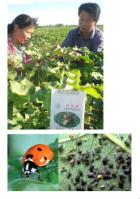Biological control of cotton pests in China |
| |
| Affiliation: | 1. State Key Laboratory for Biology of Plant Diseases and Insect Pest, Institute of Plant Protection, Chinese Academy of Agricultural Sciences, Beijing 100193, PR China;2. USDA-ARS, Arid-Land Agricultural Research Center, 21881 N. Cardon Ln., Maricopa, AZ 85138, USA;1. Department of Entomology, Texas A & M University;1. Shahid Bakeri High Education Center of Miandoab, Urmia University, Urmia, Iran;2. College of Plant Protection, Shandong Agricultural University, Taian, 271018, Shandong, People''s Republic of China;1. Key Laboratory of Pesticide Toxicology and Application Technique, College of Plant Protection, Shandong Agricultural University, Tai’an, Shandong 271018, China;2. Research Center of Pesticide Environmental Toxicology, Shandong Agricultural University, Tai’an, Shandong 271018, China;3. College of Plant Protection, Shandong Agricultural University, Tai’an, Shandong 271018, China;4. College of Agronomy, Shandong Agricultural University, Tai’an, Shandong 271018, China;1. CAS Key Laboratory of Insect Developmental and Evolutionary Biology, CAS Center for Excellence in Molecular Plant Sciences, Chinese Academy of Sciences, Shanghai, 200032, China;2. CAS Center for Excellence in Biotic Interactions, University of the Chinese Academy of Sciences, Beijing, 100049, China;3. College of Plant Protection, Shenyang Agricultural University, Shenyang, 110866, China;1. INRA, UMR1349, Institute of Genetics, Environment and Plant Protection, Domaine de la Motte, BP35327, 35653 Le Rheu cedex, France;2. IRISA/INRIA GenScale, Campus Beaulieu, 35000 Rennes, France;3. CNRS, UMR 6290, Institut de Génétique et Développement de Rennes, Université de Rennes 1, 2 Avenue du Pr. Léon Bernard, 35000 Rennes, France;1. CSIRO, Myall Vale Laboratories, Kamilaroi Highway, Narrabri, NSW 2390, Australia;2. CSIRO, Black Mountain Laboratories, Canberra, ACT 2601, Australia |
| |
| Abstract: | 
Cotton is one of the most economically important crops in China, while insect pest damage is the major restriction factor for cotton production. The strategy of integrated pest management (IPM), in which biological control plays an important role, has been widely applied. Nearly 500 species of natural enemies have been reported in cotton systems in China, but few species have been examined closely. Seventy-six species, belonging to 53 genera, of major arthropod predators and parasitoids of lepidoptera pests, and 46 species, belonging to 29 genera, of natural enemies of sucking pests have been described. In addition, microsporidia, fungi, bacteria and viruses are also important natural enemies of cotton pests. Trichogramma spp., Microplitis mediator, Amblyseius cucumeris, Bacillus thuringiensis and Helicoverpa armigera nuclear polyhedrosis virus (HaNPV) have been mass reared or commercially produced and used in China. IPM strategies for cotton pests comprising of cultural, biological, physical and chemical controls have been developed and implemented in the Yellow River Region (YRR), Changjiang River Region (CRR) and Northwestern Region (NR) of China over the past several decades. In recent years, Bt cotton has been widely planted for selectively combating cotton bollworm, H. armigera, pink bollworm, Pectinophora gossypiella, and other lepidopteran pest species. As a result of reduced insecticide sprays, increased abundance of natural enemies in Bt cotton fields efficiently prevents outbreaks of other pests such as cotton aphids. In contrast, populations of mirid plant bugs have increased dramatically due to a reduction in the number of foliar insecticide applications for control of the bollworms in Bt cotton, and now pose a key problem in cotton production. In response to this new pest issue in cotton production, control strategies including biological control measures are being developed in China. |
| |
| Keywords: | Biological control Cotton Natural enemies Habitat manipulation Natural enemy diversity Augmentation Conservation |
| 本文献已被 ScienceDirect 等数据库收录! |
|

